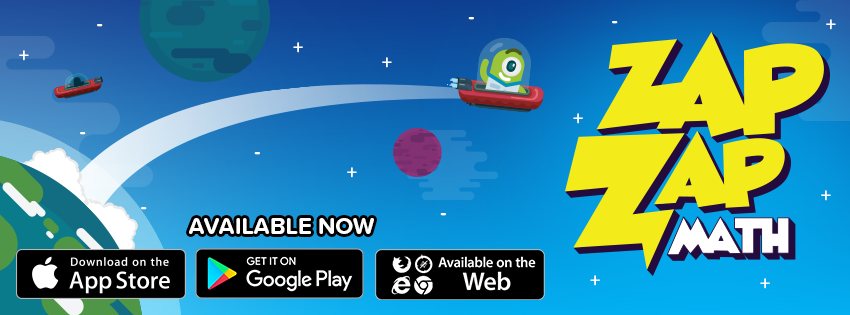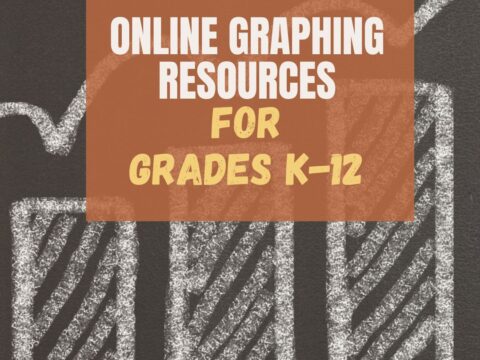With the disturbing news about plummeting math scores here in the US, it’s good to review math teaching in your classroom and consider better ways to deliver lessons to students. The Ask a Tech Teacher team has ideas for you:
How to Make Learning Math More Interactive and Engaging
Math has a reputation—either you love it or avoid it like a pop quiz you forgot to study for. For many students, the struggle isn’t about intelligence but how math is taught. Endless drills, repetitive problem sets, and old-school memorization techniques can make even the most curious minds switch off.
But here is the thing: math does not have to be boring. It’s hidden in video games, sports stats, music beats, and even how your favorite social media app recommends content. The problem is that most teaching methods do not expose these fascinating aspects of mathematics.
Thankfully, technology, video games, and interactive hobbies may alter the story in the modern day. Here are some strategies to make arithmetic interesting and remembered, whether you’re a teacher, parent, or just a kid looking to transform math from a chore into something fun.
Photo by Joshua Hoehne from Unsplash
Embracing Technology: Letting AI Do the Heavy Lifting
Students have spent hours stuck on tedious calculations for years, often missing the bigger picture. But what if AI could take the drudgery out of math homework while keeping the learning experience engaging?
This is where an AI homework helper comes in handy. Instead of spitting out answers, these intelligent assistants provide step-by-step explanations, personalized hints, and interactive problem-solving guidance.
AI tools automatically free up repetitive tasks so that students can focus on the logic, strategy, and creativity behind math. It’s like having a patient tutor on call around the clock who never gets bored of repeating the same lesson. AI-powered insights may also be used by parents and teachers to monitor student progress and uncover problems early.
Gamifying Math: Because Who Doesn’t Love a Challenge?
Let’s be realistic: kids would spend hours fighting to beat one level of their favorite video game, but focusing on math for 20 minutes? That is a fight and a half. The good news is that gamification taps into that same drive.
Apps like Prodigy, DragonBox, or Mathletics use challenges, rewards, or competition to make learning seem like an achievement rather than a chore. Earning points, unlocking new levels, and competing with classmates turn math into a game rather than just another subject.
Even the most low-tech games can be fantastic. Math scavenger hunts, escape room-style puzzles or even classroom competitions can help foster friendly rivalry and greater engagement. When math is no longer a chore but a challenge, students are automatically interested in bettering themselves.
If a game can hold a student’s attention for an hour, why not harness that power to make math stick?
Hands-On Learning: Math Beyond the Textbook
Some require you to see, touch, and perhaps experience it for that “click.” Hands-on activities are a total game-changer.
Want to teach fractions? Get students to bake a pizza and then split the slices. Exploring geometry? Get them to build models with LEGO or paper folding. Practicing probability? Use card games, dice, or real life, such as predicting weather.
Math isn’t just adding numbers on a worksheet; it involves budgeting, measuring, estimating, and analyzing. Wherever students encounter real-life math, their understanding builds, and concepts become practical rather than abstract.
The best thing is that simple classroom surveys, pattern recognition games, or real-life problem-solving projects can make mathematics more hands-on for even a resource-poor classroom teacher as long as that is relevant to real life instead of living inside a book.
Collaborative Learning: Math Is More Fun Together
Have you ever noticed how students explain things better than sometimes even the teacher? That’s the power of collaborative learning.
Math is frequently viewed as an individual task, but when students collaborate, they develop fresh viewpoints, innovative problem-solving techniques, and a greater comprehension of the subject. Peer tutoring, team problem-solving contests, and math debates are examples of group activities that transform learning from a solitary endeavor into a shared experience.
Teachers can encourage this by using think-pair-share activities, where students discuss a problem before solving it. Parents can facilitate this by creating study groups or encouraging kids to teach each other what they’ve learned.
Learning is always more engaging when it feels like teamwork. Plus, explaining a concept to someone else solidifies understanding better than any worksheet ever could.
Overcoming the “I’m Simply Not Good at Math” Attitude
Belief is one of the biggest obstacles to learning arithmetic, not aptitude. Too many children are raised believing they are “not a math person,” yet everyone can succeed in math if they take the proper approach.
Embracing the challenge of letting go of a “fixed mindset” is the crucial first step.The brain functions similarly to a muscle. The more you work it out, the more powerful it becomes. Instead of telling pupils, “I’m bad at math,” encourage them to consider, “I’m still learning this.” Parents and educators may support this by highlighting effort rather than just outcomes.
Teachers and parents can reinforce this by praising effort, not just results. If a student struggles, don’t focus on the mistake—focus on how they’re improving. Studies show that students who believe they can improve in math perform better over time.
Math is not an exclusive club—it is a skill, just like reading or playing an instrument—the more interactive and engaging the learning process, the easier it is for everyone to succeed.
Photo by Kelly Sikkema from Unsplash
Conclusion: Small Changes, Big Impact
Math doesn’t have to be a never-ending worksheet marathon. When learning is interactive, engaging, and relevant, students understand math better and enjoy it.
Through the help of AI, tools with gamification, hands-on activities, teamwork, and strategies from the growth mindset, math could transform into something worthy to face from just an added burden. To educators needing innovative methods for a topic or for any student doing their homework and attempting to figure things out through mathematics, every slight shift may add up.
Try just one of these methods today—you might be surprised how quickly math starts to click.
Here’s the sign-up link if the image above doesn’t work:
https://forms.aweber.com/form/07/1910174607.htm
“The content presented in this blog are the result of creative imagination and not intended for use, reproduction, or incorporation into any artificial intelligence training or machine learning systems without prior written consent from the author.”
Jacqui Murray has been teaching K-18 technology for 30 years. She is the editor/author of over a hundred tech ed resources including a K-12 technology curriculum, K-8 keyboard curriculum, K-8 Digital Citizenship curriculum. She is an adjunct professor in tech ed, Master Teacher, freelance journalist on tech ed topics, and author of the tech thrillers, To Hunt a Sub and Twenty-four Days. You can find her resources at Structured Learning.








































